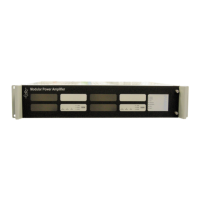iPAM400 – Product Manual
U-0629-0171.doc – Issue: 04 complete, approved
Page 8 of 138
Loudspeaker line monitoring can be provided using either AC or DC Line Surveillance:
• AC Line Surveillance:
AC line surveillance is BS EN5839 Part 8 compliant and requires one ASL AEL01 or AEL02 Active End of
Line Device to be fitted at the end on the loudspeaker circuit across the 100 V line.
The AEL01 and AEL02 enable line monitoring of either single (A) or dual A&B loudspeaker circuits
without the need for DC blocking capacitors in the loudspeakers. In dual A&B loudspeaker circuits
application the surveillance system identifies and isolates the faulty circuit in the event of short circuit.
Please refer to the AEL01 or AEL02 customer documentation for further details; see Table 7 (page 132).
• DC Line Surveillance:
DC line surveillance is BS EN5839 Part 8 compliant and requires all loudspeakers to be fitted with DC
blocking capacitors, and uses ASL EOL10K End of Line Resistors, with up to ten spurs per amplifier
slot.
With DC Line Surveillance the iPAM4400 features 4 relay isolated outputs which enable multiple small
speaker runs to be fed from single amplifiers. In the event of short circuit the surveillance system
identifies and isolates the faulty circuit, which enables the other circuits fed by the same amplifier to
operate unaffected.
The mainframe is designed to operate with dual power supplies: a 230 V AC mains supply and/or a 24 V DC
battery supply, and provides two multifunction audio input and RS485 serial I/O ports, one Ethernet port,
one RS232 serial port, one VGA port, and two USB ports.
The two multifunction audio input and serial I/O ports enable the connection of any of ASL’s general paging
microphones, the ASL BMB01 Remote I/O Unit, or other audio sources. The BMB01 unit in turn enables the
connection of ASL Ambient Noise Sensors and remote control units, and also provides flexible general
purpose analogue and digital I/O connectivity. Microphones connected to these ports can be configured for
paging and DVA routing locally at the host iPAM400, or elsewhere over the network.
The iPAM400 can be controlled from an ASL or third-party workstations elsewhere on the IP network, or
can have a directly connected monitor, mouse and keyboard, or touchscreen. The diagram in Figure 1
shows an example of the iPAM400 in system context.
Each iPAM400 is a self-sufficient VIPA unit with local intelligence and can be configured to run as stand-
alone unit or in a network. The iPAM400 supports full peer-to-peer IP communications for both voice and
control. This provides an IP enabled distributed operating platform for ASL software and other
applications, with connectivity, control, and monitoring functions. In the event of network unavailability or
central controller failure (if any), all remote units will operate with full local functionality. All local DVA
messages, local microphones, and local schedules continue to operate. In addition any peer-to-peer paging
between remote units will continue to function if the central controller fails, if any.
ASL’s Voice over IP solution allows the iPAM400s audio outputs to be synchronised across the network, and
allows the use of both high and low bandwidth codecs as appropriate to the application.
The base iPAM400 VIPA
1
software set includes: Operating System, Voice over IP, PC/DVA back end,
interfaces to ASL microphones, and IP interfaces for control and fault reporting.
The software can be controlled and upgraded either locally or remotely.
1
The iPAM400 uses Acapela speech technologies licensed from the Acapela Group.
Acapela text-to-speech processing software can optionally be installed in order to provide text-to speech broadcasts.

